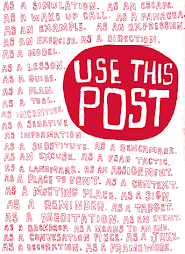stop providing spaces for learners to interact and allow learners to bring their spaces with them.
we were the teachers, and her instructors were the evaluators
have the social interactions produce the content. started off with set of readings, etc, so they weren't just "running through the meadows"
assumption:
this starting content isn't what you are supposed to master, it's a catalyst, a conduit for connections. once the course ends, uni typically severs those connections, with the web, the connections still exist
individuals need to own the space, not the learning institution
elluminate, moodle (still too centralized, so did away with moodle completely this last course, a networked course doesn't have a center, moodle still too much of a center,)
when first did moodle, had a central discussion form, this last time used grasshopper (rss aggregation tool) designed by Steven Downes, has a daily newsletter that is archived, all parts have potential of ongoing dialogue around it.
dissillusion of the boundaries the institution hold
form a sense of coherence
need outcomes in uni
no research that says linear structure produces better outcomes than chaotic meanderings (langer)
targets:
traditional course - learning outcomes
moocs - essays, concepts maps, final project
other students not taking uni credit - design their own (videos, artifacts, etc)
2000 students, rich pool to draw from, gift economy
the web gives people a lot of new things to do
learning to think as a global citizen
design distributed learning models...
the economics of a global faculty member vs local -
wayfinding.. educator is a contributing guide
social sense making (sars) - distributed complex networked knowledge
how do you frame an institution that can effectively help learners mirror their learning process with the actual point of knowledge..
me wondering about
- the stuff is all connected and i am
- connectivism glossary in wikipedia (again - letting the people choose where the center is, what space works, currently they are choosing wikipedia, youtube, etc...)
- Jane's games in order to swim/live/school in the chaos.
____________________




































